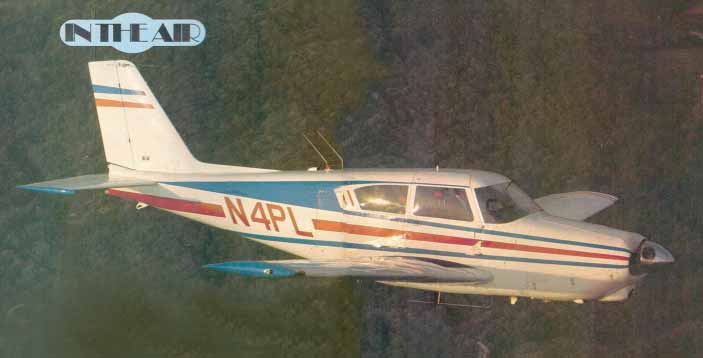
Piper
Comanche |
 |
When
Piper Came Into the New Age |
PAGE TWO
The Comanche has only one characteristic that irritates
pilots and that is the tendency to climb up on ground effect during
takeoff. The Comanche can be extremely light on its feet long before
it's ready to fly. The Comanche sits so close to the ground that it will skip
and skid around just a little bit, making you feel as if it's ready to fly long
before the actuality. This is one airplane where, if there's any wind, you don't
pick up the nosewheel first and let it run on its mains until ready
to-fly, because as the nosewheel leaves the ground, the plane will
want to hop off prematurely. This is not a problem, it's just a characteristic—something
which makes the Comanche's personality a little different than the
next airplane. THE COMANCHE IS SUCH A GOOD OLD AIRPLANE why is it not still in production like the Bonanza? The exact answer will probably never be known buta couple of basic facts will let you draw your own conclusion. By the time Comanche production drew to a close in the 1970-71 period, it sold for approximately $42 to 45,000, while a similarly-equipped Mooney could be had for around $27,000 and a Bonanza for $50,000. As far as that goes, an extra S20 or 25,000 bought you a Twin Comanche which was even snarkier-looking and had two motors besides. Perhaps the Comanche's biggest drawback was that it was Comanche and not a Bonanza, and everybody knows doctors buy Bonanzas, not Comacnhes. So by the time a convenient. flood inundated the Lockhaven plant, the decision had been made and the excuse found to discontinue the line. At the time there were many who said, "Gee, it's a shame; you really shouldn't do that," but the realities of the situation were that they were probably only selling ten or twelve airplanes a year and it's hard to support a labor force with that small production and still keep the price from being outrageous.
Today Comacnhes live on in their various forms and conditions to give
the would-be retractable owner a wide range of price and performance.
The little 180 will give you 140 mph indicated, when lightly loaded
at only ten gallons an hour. The 250s and 260s will push that up to
165 to 170 mph, but you're burning twenty-five to thirty-five percent
more fuel. The most noticeable difference, however, is in
climb performance. Then there is the 400 horse muscle machine that
is so rare and exotic that you'd better find a 400 owner and hang around
him a while to find out if you have what it takes to feed eight cylinders
of fire-breathing. gas-guzzling Lycoming. |